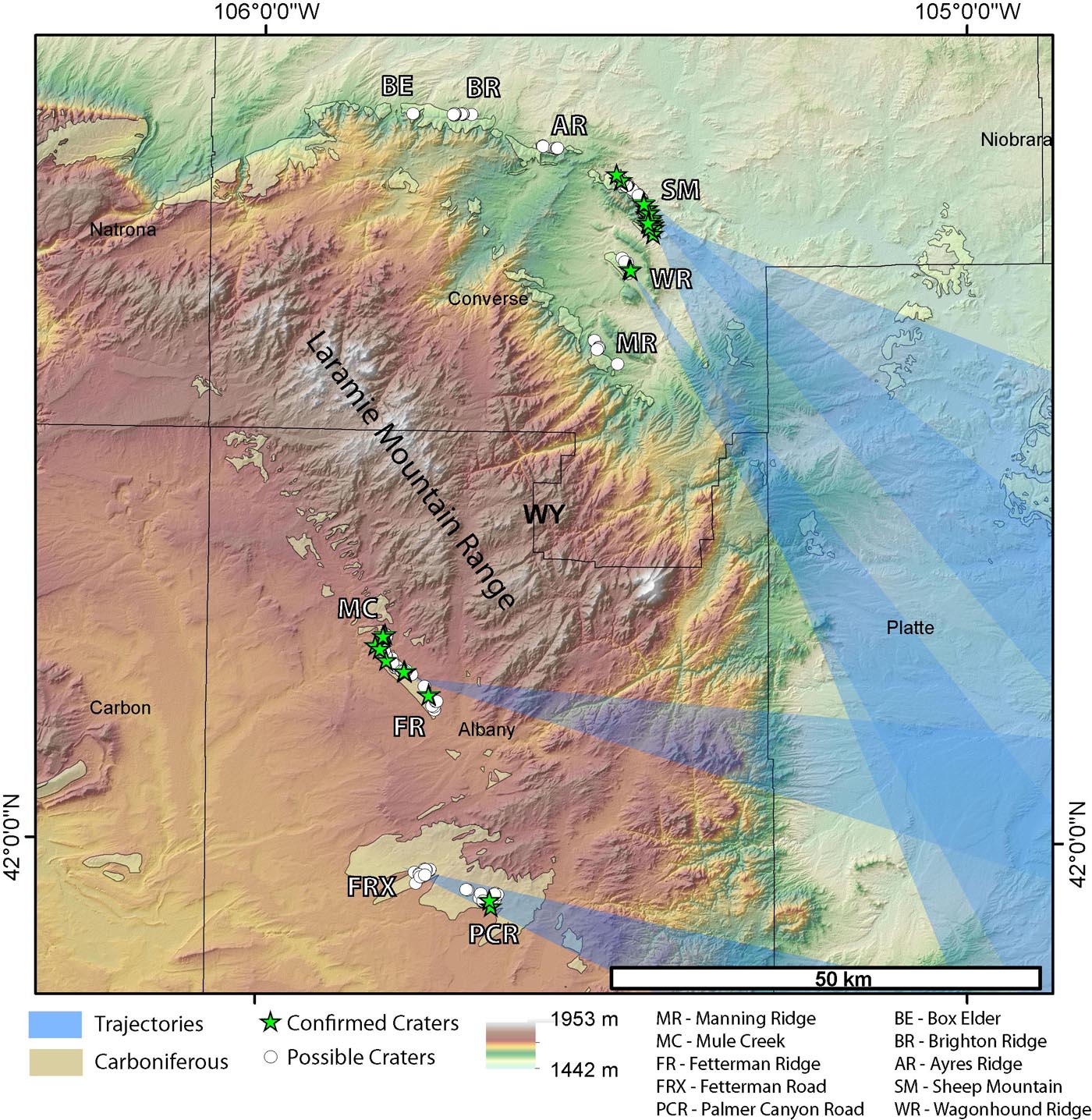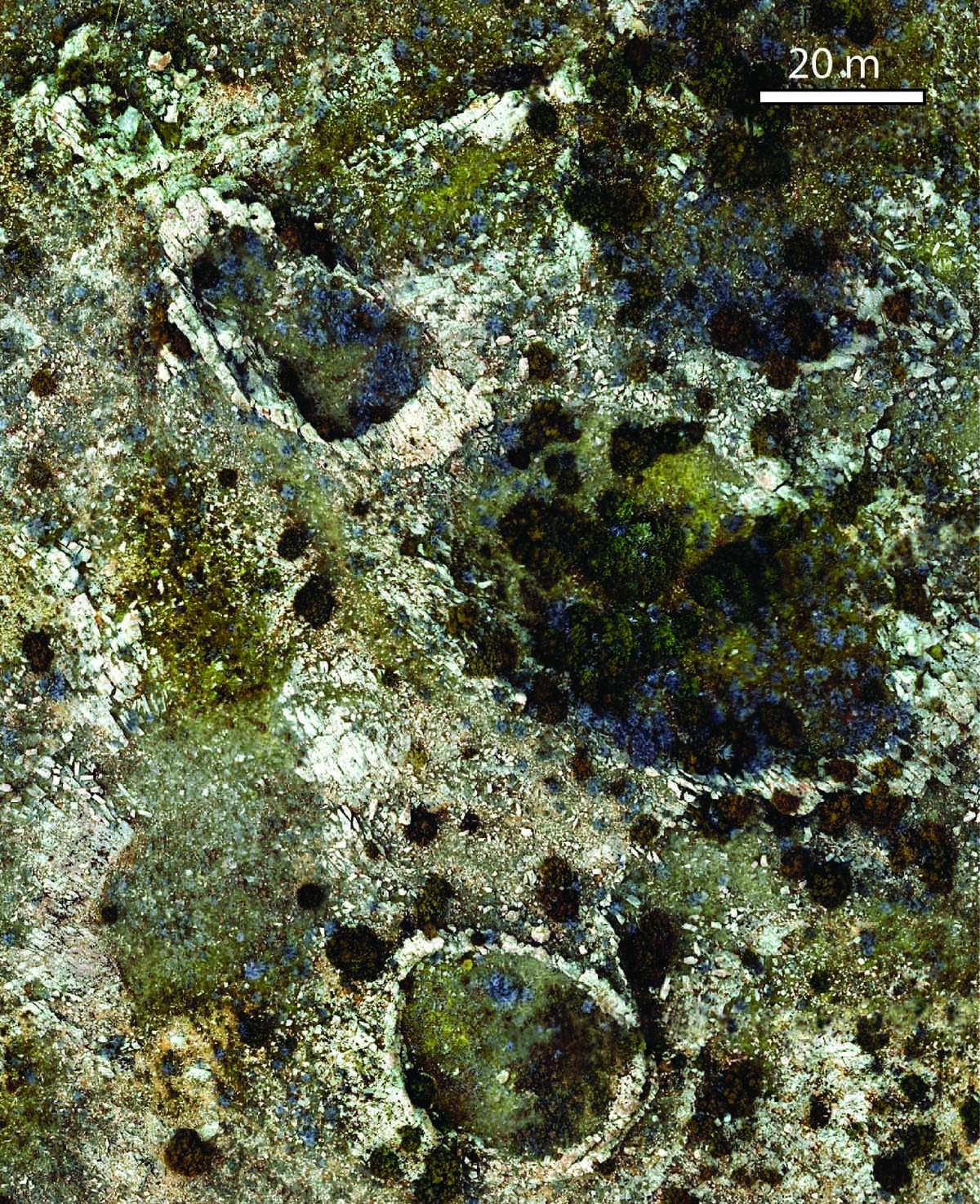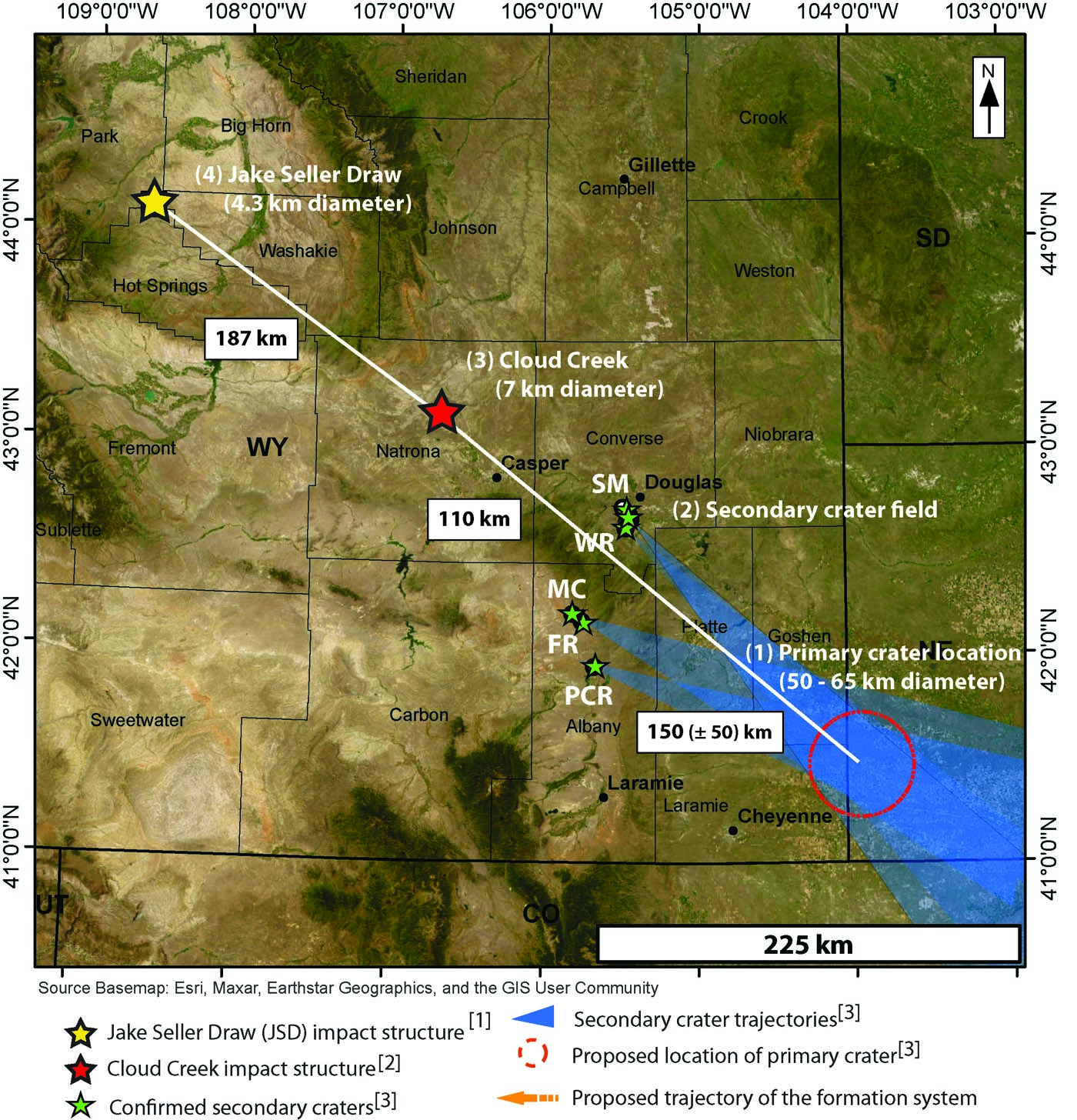Secondary cratering: a case study on Earth
- 1University of Freiburg, Institute of Earth and Environmental Sciences, Geology, Freiburg, Germany (thomas.kenkmann@geologie.uni-freiburg.de)
- 2Independent consultant, Casper, Wyoming 82609, USA
- 3Independent consultant, Colorado Springs, Colorado 80904, USA
- 4School of Science, Casper College, Casper, Wyoming 82601, USA
- 5Department of Earth Sciences, University of Cambridge, UK
Introduction
The contribution of secondary craters to the size-frequency distribution of impact craters on planetary surfaces has been debated controversially [1-3], in particular as they have the potential to affect the dating of planetary surfaces via crater counting. The identification of secondary craters is straightforward in proximity to the source crater. Fragments impacting near the primary crater have relatively low velocities and produce irregular and non-circular shaped craters that are shallower than fresh primaries [4]. Here we present the first field of secondary craters found on Earth that allows to study secondary crater formation in detail.

Fig.1 DEM map of southeastern Wyoming, USA, showing the locations of the secondary craters and the trajectory fans.
The secondary crater field in Wyoming
In 2018 a field of small impact structures was discovered in Wyoming in tilted Permian strata of the Rocky Mountains Front Range system [5] (Fig. 1). The confirmation of the impact origin of these craters was based on the documentation of shock features in quartz grains. At first, [5] interpreted this cluster of craters as a crater strewn field that was formed by the atmospheric fragmentation of a single meteoroid. The maximum theoretical spreading of such strewn fields is restricted and should not exceed more than one kilometer perpendicular to the trajectory [6]. Since the discovery of the first craters, additional craters have been identified in the same strata in an area that measures 90 by 40 km (Fig.1) [8] and excludes a meteoroid-break-up scenario. Instead it was shown that the craters represent secondary craters.
Secondary crater morphologies and trajectory reconstruction
The diameters of the 31 confirmed and 188 potential crater structures range in size from 10 m to almost 80 m. Many craters are circular, but their ellipticity can reach up to 1.7 (Fig. 2). All craters are exposed at the same stratigraphic level so are assumed to be of equivalent, 280 Myr age. The freshest structures contain steep crater walls, raised rims with overturned ejecta flaps and remains of the proximal ejecta blankets. Estimates of depth-diameter ratios are 0.1 and less. We observe irregular crater clusters and crater chains, where craters overlap [7]. Occasionally relics of herringbone patterns were observed (Fig. 2). We used the orientation of the long axis of elliptical craters and the crater chain alignments for trajectory reconstruction. Criteria for up-range and downrange distinction included overturned ejecta flap downrange and V-shaped herringbone patterns (Fig. 2). The craters define fan-like corridors of trajectories for each crater field (Fig. 1). Tracing back the trajectories allowed the location of the primary crater to be estimated in the area of the intersection of the corridors, centered at 41°28’N and 103°59’W [7]. All discovered secondary craters occur at a distance of 150+/-50 km to the proposed primary crater. We calculated the ballistic paths of ejecta taking into account aerodynamic drag. Trajectories of ejecta with 1, 2 and 4 m radius were modeled with ejection angles ranging from 30 to 60 degrees and initial speeds of 1, 2 and 4 km/s. Modeling showed that the impacts occurred at around 700-1000 m/s with impact energies of about 12 to 400 GJ. Such impacts are capable of generating craters of 8–55 m in diameter and may generate small volumes, where shock pressures are sufficient to form shock microstructures in quartz [7].

Fig.2 Drone image of a the southern part of the Sheep Mountain secondary crater field.
The primary crater
The possible location of the primary crater is situated in the Northern Denver basin, where 280 Myr old strata are deeply buried beneath younger beds. Ejecta scaling suggests that the primary crater may have a diameter of 50-65 km. We will analyze newly released high-resolution Bouguer gravity data to constrain location and size of the possible crater. The borehole I-35 Hawk Fee, situated in the area of interest, shows some breccia layers at 3023-3066 m depth at the respective stratigraphic level, but shock features could not unequivocally found until now.
A chain of primary craters in Wyoming?
Recently, a new impact structure has been discovered in the Bighorn Basin of NW Wyoming, named Jake Seller Draw impact structure [8] some 300 km NW of the secondary crater field. The 4.3-km-diameter structure was recognized as a seismic disturbance at a depth of ∼6.5 km making it the most deeply buried impact structure known on Earth to date. Shock features were detected from boreholes drilled into the center of the structure and its ejecta. Seismo-stratigraphy and drilling showed that the crater also formed 280 m.y. ago. The coincident stratigraphic age of the Jake Seller Draw impact structure with the ages of the Wyoming crater field, its SE-NW alignment with the fan of secondary craters and the proposed source crater of the Wyoming crater field, suggest a causal relationship between the Jake Seller Draw structure and the Wyoming crater field [8]. In addition to that, the buried 7 km diameter Cloud Creek impact crater [9] lies exactly on the same trajectory some 110 km NW of the secondary crater field (Fig.3). Its published age apparently rules out a connection to the other craters, but in a personal communication with the first author of [9], the age of Cloud Creek was presented as not robust. We propose that the Wyoming impact event comprised of three asteroids and impacted the Earth along a SE to NW impact trajectory. The largest of the primary craters formed the secondary crater field that is preserved in downrange direction.

Fig. 3 Map of the primary and secondary impact structures in Wyoming
References
[1] Ivanov,B.A. 2006, Icarus, 183, 504–507. [2] McEwen,A.S. & Bierhaus,E.B. 2006, AREPS, 34, 535–567. [3] Zanetti,M. et al. 2017, Icarus, 298, 64–77. [4] Pike, R.J. & Wilhelms, D.E. 1978, Proceedings, LPSC 9, 907–909. [5] Kenkmann, T. et al. 2018, Scientific Reports, 8, 13246. [6] Artemieva,N.A. & Shuvalov,V.V. 2001, JGR 106, 3297–3309. [7] Kenkmann,T., et al. 2022, GSA Bull. https://doi.org/10.1130/B36196.1. [8] Sturm,S., et al. 2024, GSA Bull. https://doi.org/10.1130/B37164.1. [9] Stone,D.S. & Therriault,A.M. 2003, MAPS, 38, 445–455.
How to cite: Kenkmann, T., Sturm, S., Müller, L., Fraser, A., Cook, D., Sundell, K., and Rae, A. S. P.: Secondary cratering: a case study on Earth , Europlanet Science Congress 2024, Berlin, Germany, 8–13 Sep 2024, EPSC2024-1067, https://doi.org/10.5194/epsc2024-1067, 2024.